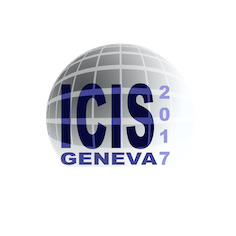Speaker
Description
For the production of high intensity $^{11}$C beams for image-accompanied hadron therapy, we present our proposal for a radioactive ion beam production system based on the ISOL technique (Isotope Separation On-line), operated with a compact 1+ electron cyclotron resonance ion source (ECR). Carbon therapy is a very precise treatment for cancers with localized tumors. However, such treatments rely on complex treatment planning systems that simulate the dose delivery to the patient. On-line or post-treatment dose verification based on the fragmentation of $^{12}$C is complex and cannot image the exact position where the energy is deposited. Therefore, we propose a carbon therapy protocol where the stable carbon beam is replaced by $^{11}$C. This combines therapy with on-line PET-imaging. Thus, 3D dose distribution of the irradiation field can be measured, verifying where the energy is deposited. Since an efficient treatment requires a high intensity particle beam (~ 4∙10$^{8}$ ions/s), the radioactive ion beam production system needs to be optimized, in order to deliver the beam in desirable intensity and purity to the patient. We propose a system based on the ISOL method, where $^{11}$C is produced within a solid target via low-energy proton irradiation. Subsequently, the isotope has to be extracted and ionized for the mass separation. Carbon is very refractory. The atomic diffusion inside the solid and the evaporation once it reaches the surfaces are known to be difficult, which limits the isotope release out of the target. Therefore, an isotope extraction in molecular form ($^{11}$CO) is expected to enhance the release efficiency. Consequently, we present our studies of a target-ion source unit with a solid boron nitride target and operated with a compact 1+ ECR ion source. Plasma ion sources are appropriate for carbon oxides with their relatively high ionization potential. Particularly, ECR ion sources seem to be beneficial, due to their absence of hot metal surfaces, which would limit the ionization efficiency by long retention times of $^{11}$CO. We will discuss important considerations for the target handling, and the operation of an ECR-type ion source, such as neutron fluxes and gas loads that result from the irradiation of a solid target. ECR ion sources are usually operated with permanent magnets. Therefore, high neutron fluxes are a limiting factor with respect to the stability of the plasma confinement. Simulations that have been carried out with the particle transport code FLUKA [1, 2], show that the flux resulting from low-energy proton irradiation are in an acceptable range to be managed with shielding. Furthermore, applying a controlled oxygen leak to the boron nitride target introduces the difficulty of oxidation of the target material, which could overload the ion source. First chemical equilibrium and molecular sideband calculations indicate that the resulting gas flux remains manageable for an ECR ion source. However, the extraction as $^{11}$CO via external oxygen supply includes complications for the target material stability. Consequently, further investigation and experimental validation will be done in the future. This work is supported by the Marie-Skłodowska -Curie Innovative Training Fellowship of the European Commission’s Horizon 2020 Program under contract number 642889 MEDICIS-Promed.
References
[1] A. Ferrari et. al., CERN-2005-10, INFN/TC05/11, SLAC-R-773 (2005).
[2] T. T. Böhlen et. al., Nucl. Data Sheets 120 (2014), 211.
